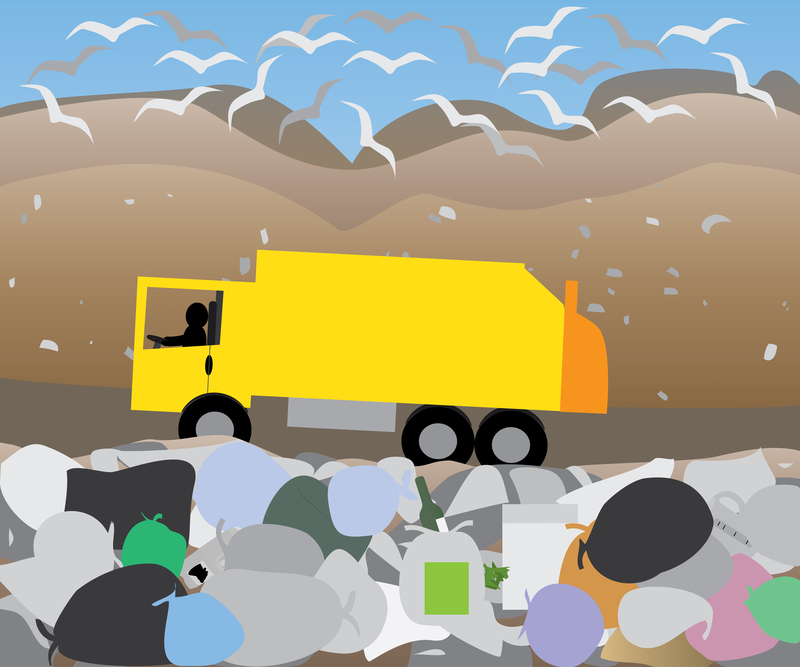Creative Approaches to Disposing PPE Waste Responsibly
The global pandemic thrust personal protective equipment (PPE) waste into the environmental spotlight. Single-use masks, gloves, gowns, and face shields became our daily companions, but their responsible disposal presents a new ecological challenge. With billions of pieces entering the waste stream, innovative solutions for PPE disposal are desperately needed. In this comprehensive guide, we'll explore creative, eco-friendly, and practical strategies for responsibly managing PPE waste.

Understanding the PPE Waste Problem
The surge in PPE usage has resulted in unprecedented waste volumes. Commonly made from plastic-based, non-biodegradable materials like polypropylene and polyethylene, PPE items can persist for hundreds of years if not handled properly. This presents unique environmental and public health risks:
- Plastic Pollution: Discarded masks and gloves can break down into microplastics, polluting water bodies and harming wildlife.
- Pathogen Risks: Improperly disposed PPE can transmit viruses and bacteria, endangering waste workers and the public.
- Landfill Overload: With billions of PPE items used globally, traditional waste facilities struggle to cope, leading to increased landfill burden.
Given these challenges, creatively disposing of PPE waste is essential to protect our planet and public health.
Why Standard PPE Disposal Methods Fall Short
Traditional disposal routes--incineration and landfill--have significant drawbacks:
- Landfilling PPE waste can cause long-term plastic pollution.
- Incineration emits greenhouse gases and other pollutants.
- Recycling is typically not an option due to contamination and material mix.
Thus, creative approaches for PPE waste disposal are more crucial than ever. Let's examine the emerging solutions and responsible practices shaping a greener future.
Top Creative Approaches to Disposing PPE Waste Responsibly
1. PPE Waste Recycling Initiatives
Recycling single-use PPE is challenging, but not impossible. Some pioneering organizations and startups are developing processes to recycle PPE materials safely and efficiently:
- Mechanical Recycling: Specialized plants collect used PPE, sterilize it, and mechanically shred it into plastic pellets for manufacturing new products.
- Chemical Recycling: Advanced facilities break down polymer chains chemically, returning PPE plastic to raw materials usable for new products.
- Upcycling: Artists and designers creatively upcycle used masks and gloves into sustainable art, furniture, or construction materials.
Success Story: TerraCycle's PPE Recycling Program allows businesses and individuals to mail in used PPE for recycling, diverting tons of waste from landfills.
2. PPE Waste-to-Energy Conversion
Converting PPE waste into energy, rather than depositing it into landfills, is another responsible approach to PPE waste disposal. Technologies like pyrolysis and gasification transform PPE plastics into electricity, fuels, or heat:
- Pyrolysis decomposes PPE without oxygen, yielding valuable oil or synthetic gas that can be used for power.
- Gasification uses a controlled high-temperature environment to convert PPE into a clean-burning gas.
Waste-to-energy offers a twofold benefit: reduces waste volume and yields renewable energy.
3. Compostable PPE Innovations
Researchers and manufacturers are innovating biodegradable or compostable PPE made from natural fibers like bamboo, cotton, or bioplastics. These alternatives break down safely in composting environments, offering an eco-friendly end-of-life option.
- Biodegradable Masks: Made from plant fibers, can decompose within months under the right conditions.
- Compostable Gowns: Utilize maize, starch, or sugarcane-derived biopolymers.
*Tip: Always separate compostable PPE from conventional plastic-based items to avoid contaminating waste streams.*
4. Dedicated PPE Collection Bins and Points
Strategically placed PPE-specific collection bins encourage proper disposal in public spaces, offices, and hospitals:
- Clearly labeled stations reduce contamination and mixing with recyclables or general waste.
- Collected PPE can be transferred to specialized recycling or waste-to-energy facilities.
- Promotes public education about responsible disposal habits.
*Municipalities and companies should invest in visible, accessible collection points for PPE waste.*
5. PPE Reuse and Sterilization Programs
Where practical and safe, reusing or sterilizing PPE can dramatically reduce waste generation. Hospitals and healthcare facilities have adopted methods like:
- UV-C Light Sterilization: Uses ultraviolet light to disinfect masks and shields for re-use.
- Vaporized Hydrogen Peroxide: A safe and efficient method to decontaminate N95 respirators and similar PPE.
- Autoclaving for certain gowns and face shields.
*While not all PPE is suitable for reuse, these innovations can limit waste when used properly.*
6. Community and Corporate PPE Collection Drives
Grassroots movements and corporate social responsibility initiatives can drive the responsible collection and management of PPE waste:
- Organize local events for PPE waste collection and safe disposal.
- Partner with local governments, NGOs, or recycling startups for effective waste management systems.
- Use proceeds from recycling initiatives to fund community programs.
7. Education and Awareness Campaigns
No creative approach to PPE waste can succeed without public participation. Building awareness about the importance of responsible PPE waste disposal is crucial:
- Run educational campaigns showing proper disposal techniques.
- Encourage the use of reusable, washable masks where appropriate.
- Highlight environmental impacts of improper PPE disposal.
*Empowered and informed communities are better equipped to make sustainable decisions.*
Challenges in Implementing Creative PPE Waste Disposal Methods
Despite the emergence of innovative solutions, several obstacles remain in mainstreaming responsible PPE waste management:
- Costs: Specialized recycling and sterilization technologies can be expensive to deploy at scale.
- Contamination: Used PPE must be properly sanitized before processing, adding complexity.
- Lack of Infrastructure: Many regions lack dedicated facilities for PPE processing and recycling.
- Inconsistent Regulations: Varying rules across jurisdictions can hamper unified efforts.
Close collaboration between governments, manufacturers, and the public is essential to overcome these hurdles.
Practical Tips for Responsible PPE Disposal at Home and Work
For Individuals:
- Follow local guidelines for PPE disposal; use sealed bags for used items.
- Never discard PPE on streets, parks, or waterways.
- If available, use dedicated PPE bins or mail-in recycling programs.
- Choose reusable or compostable masks and gloves wherever possible.
- Wash your hands after handling or disposing of PPE.
For Organizations and Businesses:
- Install clearly marked PPE disposal bins in high-traffic areas.
- Partner with certified waste handlers for collection and processing.
- Explore PPE recycling or waste-to-energy options.
- Educate staff and visitors about proper disposal procedures.
- Consider eco-friendly PPE procurement policies.
Global Best Practices: Innovative PPE Waste Management Around the World
- France: The French government has piloted PPE recycling through partnerships with startups, transforming masks into construction materials.
- United Kingdom: TerraCycle UK's PPE recycling scheme diverts hospital masks and gloves from landfills, processing them into reusable plastic.
- India: Engineers process used PPE kits into paving blocks for roads, employing a unique sterilization and melting process.
- United States: Several waste-to-energy facilities have adapted to process PPE, generating electricity and reducing landfill burden.
The Future of Sustainable PPE Waste Disposal
The future promises even more innovative ways to dispose of PPE waste responsibly. As technology advances and awareness grows, expect to see:
- Wider adoption of biodegradable and reusable PPE in all sectors.
- Development of closed-loop systems, where PPE is collected, recycled, and remanufactured locally.
- Stronger regulations supporting sustainable procurement, use, and disposal of PPE items.
- Greater investment in pandemic preparedness and waste management infrastructure.
A sustainable approach to PPE waste is not just about disposal, but about rethinking how we design, use, and manage our protective gear from manufacturing to end-of-life.

Conclusion: Embracing Creativity for PPE Waste Solutions
The pandemic reinforced the value of PPE for public health, but also its potential as an environmental liability. By embracing creative, responsible approaches to PPE waste disposal, individuals, organizations, and governments can safeguard both people and the planet.
From recycling programs and biodegradable innovations to energy recovery and educational outreach, there are many ways to tackle PPE waste responsibly. The journey demands commitment, collaboration, and a willingness to innovate. By making sustainable disposal practices an everyday habit, our world can emerge from this crisis cleaner and more resilient than ever before.
Remember: Every mask, glove, and gown counts. Choose creative, responsible disposal methods and be a part of the solution!
Frequently Asked Questions (FAQs)
- Can I recycle my PPE at home?
Most curbside recycling programs do not accept PPE due to contamination risks. Look for specialized collection points or mail-in programs, like those run by TerraCycle. - What is the best option for home PPE disposal?
Seal used PPE in a bag and place with general waste. Do not litter or flush PPE items. - Are biodegradable masks as effective as regular masks?
Many biodegradable masks meet safety and filtration standards, but always check product certifications before use. - How can businesses ensure responsible PPE disposal?
Install dedicated bins, educate staff, and work with certified waste handlers or recycling programs.
